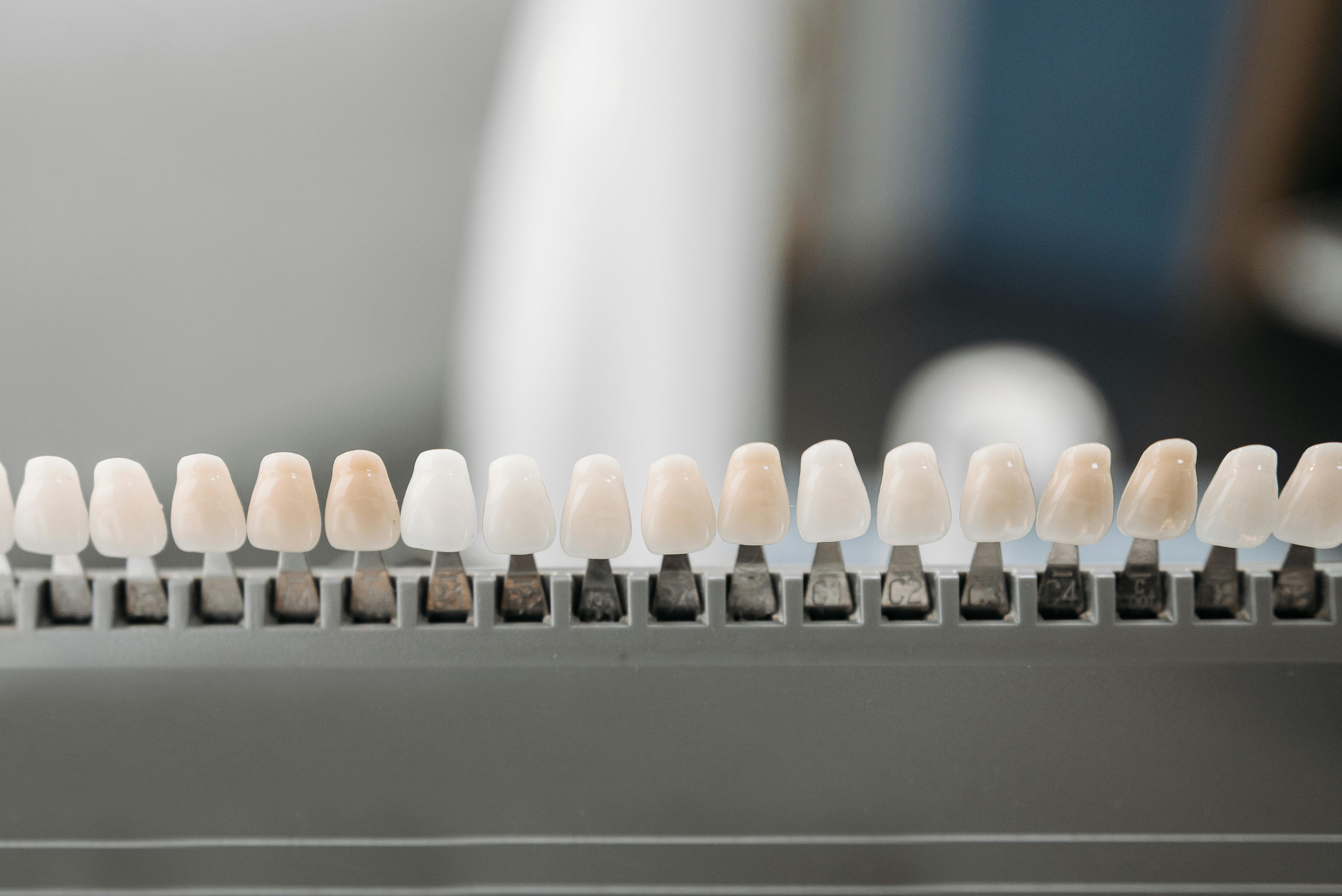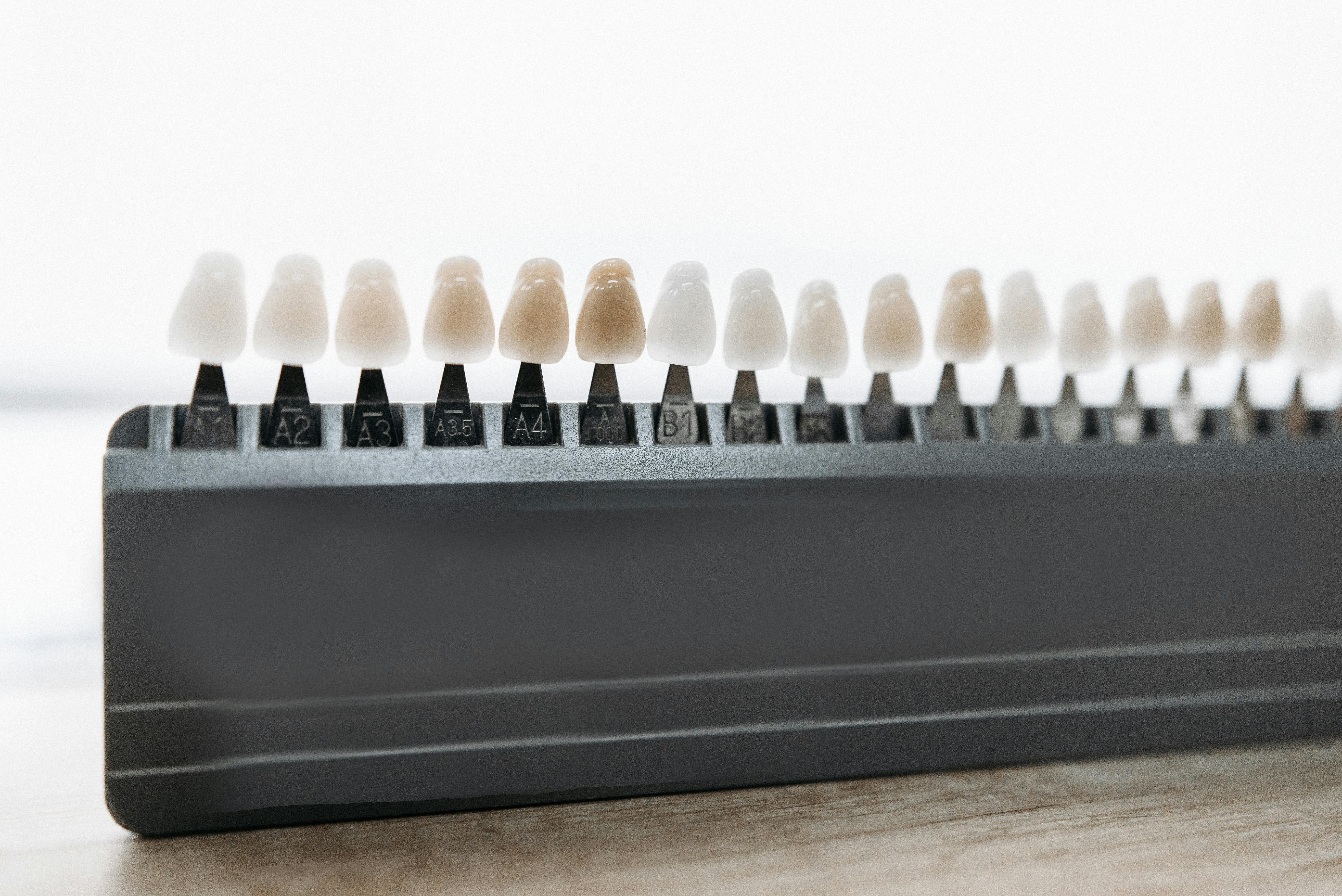Veneers are an increasingly popular treatment for people looking to improve the aesthetics of their smile. Veneers can help to transform the look of your teeth, making them look brighter, straighter and more even. But do veneers go over your real teeth? The answer is yes. Veneers are thin, custom-made shells that are designed to fit over the front surface of your existing teeth. They are made from either porcelain or composite resin material and are bonded to the front surfaces of your teeth to give them a more natural-looking appearance.Yes, veneers go over your real teeth. Veneers are thin shells of ceramic or porcelain that are custom-made to fit over the front surfaces of your teeth. They are bonded to the front of the teeth and can help to improve their appearance and provide protection.
What is a Veneer?
A veneer is a thin layer of material placed over the surface of a tooth. It is typically made from porcelain or composite resin and used to improve the appearance of the tooth. Veneers can be used to close gaps, repair chips or cracks, lighten the color of teeth, and even change the shape or length of teeth. Veneers are also used to restore worn-down teeth. They are often used in combination with crowns and bridges to repair damaged teeth or replace missing teeth.
Veneers are custom-made for each patient, so they fit perfectly over the existing tooth structure. The dentist will first prepare the tooth by removing a small amount of enamel from its surface. This allows the veneer to fit snugly against the tooth without affecting its function or strength. Once in place, veneers are strong and durable and can last up to 10 years with proper care.
Benefits of Veneers for Teeth
Veneers offer a wide range of benefits for people with teeth that are chipped, discolored, or uneven. They can improve the overall appearance of your smile and boost your confidence. Veneers are thin shells that are custom-made to fit over your existing teeth, providing an aesthetically pleasing look. Here are some of the key benefits of using veneers:
1. Improved Appearance: One of the main advantages of veneers is that they can drastically improve the appearance of your smile by covering up chips, cracks, discoloration, and gaps in your teeth. Veneers can also be used to make crooked or misshapen teeth look straight and even.
2. Long-Lasting: Another great benefit of veneers is that they are incredibly long-lasting if properly cared for. With proper maintenance and regular visits to your dentist, you can expect your veneer to last up to 10 years or more.
3. Stain Resistant: Veneers are also highly stain resistant because they are made from porcelain materials that resist staining from coffee, tea, red wine, and smoking. This means you can enjoy all the foods and beverages you love without fear of staining your teeth.
4. Low Maintenance: Once you have a set of veneers installed in your mouth, there is very little maintenance required on your part. All you need to do is brush and floss regularly and visit your dentist twice a year for cleanings and checkups.
Overall, there are many benefits to having veneers installed in your mouth. Not only can they improve the appearance of your smile but they are also highly durable and low maintenance. If you’re considering getting veneers for yourself, talk with your dentist about all the advantages they have to offer so you can make an informed decision about whether or not this treatment is right for you.
How Are Veneers Placed on Teeth?
Veneers are a popular cosmetic dental procedure used to improve the appearance of your teeth. They are thin shells that are placed over the front surface of the teeth, and can be used to correct a variety of aesthetic imperfections. Placing veneers requires two visits to your dentist’s office. During the initial visit, your dentist will take impressions of your teeth and discuss how you would like them to look. They will then send these impressions off to a dental lab where a custom set of veneers will be made for you. During the second visit, your dentist will check the fit and color of the veneers before bonding them to your teeth. This process usually takes about an hour and requires little to no pain or discomfort. Once in place, veneers can last for many years with proper care and maintenance.
The first step in placing veneers is preparing the tooth surface by removing a thin layer of enamel from the front surface of the tooth. Removing this layer helps ensure that the veneer lays flush against the tooth and looks natural when it is placed. Then, an impression is taken and sent off to a laboratory where a custom set of veneers is created for you based on this impression. When you return for your second visit, these custom-made veneers are placed over your prepared teeth and bonded securely into place with special adhesive material. The entire process usually takes about an hour, depending on how many teeth require veneers. Once in place, they look just like natural teeth!
Cost of Veneers for Teeth
The cost of veneers for teeth can vary greatly depending on the type of veneer used, the complexity of the procedure, and where you live. Porcelain veneers are generally more expensive than composite veneers, and may cost anywhere from $500 to $2,500 per tooth. Additional costs may be incurred for any necessary preparatory work, such as tooth grinding or reshaping. The total cost of the procedure could be anywhere from $1,000 to $10,000 or more.
The best way to get an accurate estimate for veneer costs is to consult with a dentist. He or she can evaluate your teeth and make a recommendation based on your particular needs and budget. Additionally, if you have dental insurance coverage, it may help reduce the overall cost of the procedure. Be sure to check with your insurance provider to find out if veneers are covered under your plan.
In some cases, a dentist may offer financing options which could help spread out the cost over a period of time. This can make it easier to manage the expense associated with getting veneers for your teeth. It’s also a good idea to ask about any discounts or special offers available at your dentist’s office.
Overall, the cost of veneers for teeth can vary significantly depending on many factors so it’s important to speak with a qualified professional who can provide you with an accurate estimate for your individual situation.

Types of Dental Veneers
Dental veneers are thin shells of porcelain or resin that are bonded to the front of your teeth. They provide a cosmetic improvement to your smile, correcting chips, gaps, and discoloration. There are two types of dental veneers: porcelain and composite.
Porcelain veneers are made from a thin piece of porcelain that is custom-made to fit your teeth. They provide a natural-looking result and are highly durable and stain-resistant. Porcelain veneers require minimal preparation of the tooth’s surface before being bonded in place.
Composite veneers are made from a composite resin material that is applied directly to the surface of the tooth. Unlike porcelain veneers, composite veneers require more preparation as they must be shaped and sculpted prior to being bonded in place. Composite veneers provide an immediate result but may not be as durable as porcelain veneers as they can be subject to staining or wear over time.
Pros of Veneers
Veneers are thin shells of porcelain that are placed on the front surface of teeth. They can be used to restore damaged teeth, improve the aesthetics of a smile, and even to correct misaligned and gapped teeth. Veneers have many advantages over other types of treatments including being highly durable, easy to customize, and resistant to staining. They also require less maintenance than other treatments such as crowns or implants. Veneers can also be used to help protect teeth from further damage.
Cons of Veneers
While veneers can be an excellent choice for many people looking to improve their smiles, they do come with some drawbacks. Veneers are an expensive procedure and typically require multiple visits to the dentist for preparatory work and installation. The process is irreversible as well, since enamel must be removed in order for veneers to adhere properly. Additionally, veneers can sometimes appear unnatural or fake-looking due to their glossy surface or because they don’t blend in with surrounding teeth. Lastly, veneers are not a permanent solution and need regular maintenance over time in order to remain attractive and functional.
Preparing for Getting a Veneer
Before getting a veneer, it is important to make sure that the tooth is in good condition. It may be necessary to have a professional cleaning and any necessary dental work done before the procedure. This will help ensure that the veneer will have a strong bond and remain in place for years to come. It is also important to discuss any potential side effects or risks associated with the procedure with your dentist. This can include things like changes in tooth color, sensitivity, and possible irritation of the gums.
Your dentist will need to take an impression of your teeth in order to make sure that the veneers fit correctly and securely. The impression will be sent off to the lab where technicians will create the custom-fitted veneers for you. The process usually takes about two weeks from start to finish, so make sure you plan ahead accordingly if you are considering getting a veneer.
In some cases, your dentist may need to remove some of your natural enamel in order to make room for the new veneers. This can cause some sensitivity and discomfort during the procedure, but luckily this can be managed with anesthetic or sedation dentistry if needed. It is also important to remember that once your enamel has been removed it cannot be replaced, so it is essential that you take proper care of your new veneers after they are placed.
Your dentist will likely give you specific instructions on how best to care for your new veneers once they are placed. This includes brushing twice daily with a soft-bristled brush and flossing at least once per day using a gentle flossing technique. It is also important not to bite on hard objects or chew on ice as this can cause damage or dislodge your new veneers.
Getting a veneer is an excellent way to improve both the look and health of your teeth, but it is important to make sure that you are properly prepared before undergoing this type of procedure. Be sure to discuss all aspects of treatment with your dentist so that you understand what risks may be involved and how best to care for your new smile once it’s complete!

Conclusion
Veneers are a great option for those looking to improve the appearance of their teeth. They are made from thin shells of porcelain or composite resin that cover the front surfaces of teeth. Veneers can be used to fix a variety of dental issues such as chips, stains, gaps, and misalignments. Veneers offer an aesthetically pleasing solution while still preserving the natural structure and shape of your teeth. With proper maintenance and care, veneers can last 10 to 15 years or more.
Ultimately, veneers are an excellent way to enhance your smile and boost your confidence. If you’re considering getting veneers, it’s important to consult with a qualified dentist who can determine if veneers are right for you. With the help of a skilled professional, you’ll be able to get the perfect set of pearly whites in no time!
